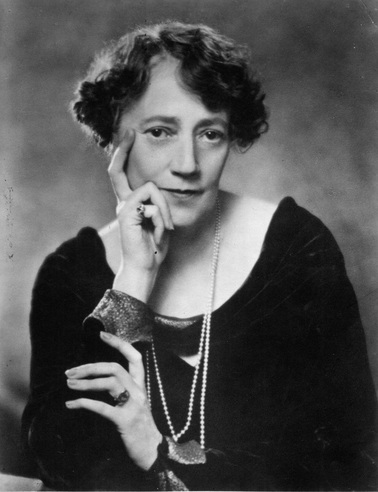|
Yesterday, Authors.me announced that I took FIRST place in the Romance Me writing contest! I submitted my new time-traveling historical romance, Time's Firebird. As a prize, they printed my first chapter on Romance Junkies. I hope you enjoy reading it! And YAAAAY! What a happy Valentine's Day!
1 Comment
 For the next couple of #WickedWomenWeds, I'll be featuring non-profits that benefit women. Dining for Women is one of my favorites. A national organization with chapters all over the country, Dining for Women is a giving circle that gathers together once a month for a potluck dinner. Instead of spending $35+ on a nice meal dining out, these ladies (and a few good men) get together to potluck and discuss non-governmental organizations (NGOs) around the world that are doing great things to help women in need. Then they donate their $35 or more to help fund grants to those great NGOs. Their mission: Through collective giving circles, Dining for Women inspires, educates and engages people to invest in grassroots programs that make a meaningful difference for women and girls living in extreme poverty in developing countries. How they got started: In the fall of 2002, Marsha Wallace, a former nurse and mother of four from Greenville, SC, read an article about a group of friends who met for potluck dinners and collected donations for needy families using the money they would have otherwise spent in restaurants. Marsha was struck by the idea of using “dining out dollars” to help others, and the idea of DFW was conceived. On her birthday in January 2003, she invited some friends to her home to celebrate, a hat was passed and $750 was raised for Women for Women International. For the next few years, Marsha and co-founder Barb Collins labored tirelessly in Marsha’s kitchen to nurture and raise this powerful, but simple idea. Over the years, Dining for Women has captivated hearts across the U.S, and increasingly, the world. DFW has been showcased by the New York Times, NBC Nightly News, People, Woman’s Day magazine, Good Morning America and the Today Show. Dining for Women works to impact the lives of women and girls worldwide, who often live on less than $1 a day. By focusing on women and girls, DFW empowers women to find solutions to the problems they face through education, health care, and economic development. So, if you like to eat and you like to help women and girls around the world, consider joining and supporting this great organization! I can't think of a tastier solution to solving world problems...  Thanks to Clare for nominating Karen Piper as a non-fiction writer to celebrate this week. Karen Piper is the author of The Price of Thirst, Cartographic Fictions and Left in the Dust, which the Los Angeles Times has called an “eco-thriller” that every “tap-turning American” should read. A regular contributor to Places magazine, Piper is also a winner of Sierra’s Nature Writing Award and has published in numerous academic journals. She is professor of postcolonial studies in English and adjunct professor in geography at the University of Missouri. I'm particularly interested in The Price of Thirst. For those who have no access to clean water—a fifth of the world's population—the price of water isn't $2.99 a bottle, it's thirst. This is the frightening landscape that Karen Piper leads us through in the book—one where thirst is political, drought is a business opportunity, and more and more of our most necessary natural resource is controlled by multinational corporations. In visits to the hot spots of water scarcity and the hotshots in water finance, Piper shows us what happens when global businesses with mafia-like powers buy up the water supply and turn off the taps of people who cannot pay: border disputes between Iraq and Turkey, a “revolution of the thirsty” in Egypt, street fights in Greece, an apartheid of water rights in South Africa. And in our own backyard, where these same corporations are quietly buying up water supplies, Piper reveals how “water banking” is drying up California farms in favor of urban sprawl and private towns. The product of seven years of investigation across six continents and a dozen countries, and scores of interviews with CEOs, activists, environmentalists, and climate change specialists, The Price of Thirst paints a harrowing picture of a world out of balance, with the distance between the haves and have-nots of water inexorably widening and the coming crisis moving ever closer. Wanna do something this year to support the millions of people living without access to clean water around the world. Support organizations like charity: water, Water Charity (yes, they are two different organizations), and others who are working on this issue.  In honor of Thanksgiving, I'm celebrating two culinary geniuses that changed my life: Rory Freedman and Kim Barnouin. These two ladies started a movement when they wrote their bestselling manifesto, Skinny Bitch. A sassy, hilarious diet book, Skinny Bitch exposed the horrors of the food industry while inspiring people to eat well and enjoy food. If you haven't read it, buy it right now. You'll throw out that turkey and find something else to eat that's not so chock full of hormones, anti-biotics, and life-threatening bacteria! (Check out that turkey above...he was found that way during an undercover investigation at a factory farm in North Carolina owned by Butterball.) Yep, I eat a vegan diet. Didn't see that one coming, did ya? Rory: Rory Freedman attended the University of Maryland, right down the street from me, and developed a passion for writing about food the ethical treatment of animals. She always saw herself as an animal lover and she was disgusted by what she saw in a magazine article one day. One image in the article was of baby chickens crammed into a garbage bag and thrown into a dumpster. The next picture she saw was a picture of a mother cow and a baby cow. The baby was taken away from the mother, and being upset that her baby was taken away, the mother started to ram the cage and broke her neck. The mother cow was left to die. The other picture she saw was of a downer cow, an injured cow, on the back of a truck being unloaded by a chain wrapped around the cow's legs. She was devastated to know that animals were being treated this way due to her eating meat. After reading this article in the magazine, she made the decision to become vegetarian. Kim: Before she was a Skinny Bitch, Kim Barnouin was a high school drop-out turned model who only crossed paths with a vegetable on her pizza. Born in Rhode Island and raised in Maryland, Kim felt she wasn’t ready for college and dropped out in the 11th grade. At the age of 22, Kim moved to South Beach where the waves of Miami left Kim feeling seriously lost. She modeled, waited tables to make ends meet and considered herself more of a helpless beach bum. Kim questioned her unhappy and unhealthy self during those years. What changes could she make to her lifestyle? Instead of turning to booze or something else less attractive, Kim explored food. By eating better, Kim started to physically and mentally feel better. A lightbulb went off in her head – food heals. She got her hands on every book on food she could find and enrolled in a Bachelor’s program in Natural Health. She wouldn’t stop there. This retired beach bum went on to receive a Master’s in Holistic Nutrition and is currently working on her PhD. Learning about how food affects and heals many diseases and illnesses was something she wanted to share with everyone. Eager to spread her word to the masses, Kim worked with longtime friend and vegan Rory Freedman to write a book. Neither thought Skinny Bitch would be become such a hit let alone a New York Times bestseller for two years straight. I wish you all a happy Thanksgiving full of seitan, tofu, and all the vegetables you can eat. And pie. Vegans can eat pie, too. Lots of pie. Don't forget the coconut milk ice cream! (Vegan rhubarb-strawberry-blueberry pie with caramel oat ice-cream pictured below!)  Last week, I asked you all for suggestions on a woman who was an exceptional peacemaker - someone who brought people together. Because, man, do we need that right now! Thanks to Clare for sending me a wonderful suggestion! This week we celebrate Ángela Oliveira Cézar de Costa. At the beginning of the 20th century, Argentina and Chile were coming close to armed conflict over a border dispute. The bishop of Cuyo, monsignor Marcelino del Carmen Benavente, promised to erect a statue of Christ the Redeemer to remind the parties of Christ's message of peace. The statue was subsequently made by Buenos Aires sculptor Mateo Alonso. As the countries slipped closer to war, Ángela Oliveira Cézar de Costa, a well-connected society lady who led a Christian group, had the idea of taking the statue to the Andes as a symbol of unity between the two nations. She had particular cause for concern as her brother was an Argentine Army general preparing for conflict at the frontier. As a friend of the President of Argentina, Julio Roca, she was able to gain the interest of both countries. She would later be nominated for the Nobel Peace Prize. In May 1902 there was a diplomatic breakthrough and Argentina and Chile came to peaceful agreement. The plan for the statue progressed and Oliveira Cézar de Costa and Bishop Benavente prepared to move the statue to the pass of Cumbre del Bermejo. In 1904, the Christ was moved in pieces and carried up the mountains by mule. On 15 February 1904 a pedestal designed by Molina Civit was completed and the original sculptor Alonso directed the piecing together of the bronze statue. It was erected with the figure facing the line of the border, standing on a globe with South America prominent, his left hand holding a cross and his right raised in blessing. Angela halted a war and brought two countries together with a bronze reminder of how precious peace is to their shared religious beliefs. She didn't care where the invisible border fell between the two countries. May we all walk in Angela's footsteps!  I know you haven't heard from me in a couple of weeks. October has been filled to the brim! I finished my fourth novel, started my fifth and finished up a blog tour for Fractal. Plus taking care of my growing baby boy! So thanks for your patience and sorry I skipped a few Wednesdays with you. Onto our Wicked Woman of the day! A few weeks ago, I asked you to name a wicked awesome woman who's in a profession that society tells her she shouldn't be in. Thank you to Clare for suggesting Rhianna Pratchett. Yes, she is the daughter of fellow word wielder, Terry Pratchett. And she is also a writer...well, sort of... Having written numerous features and columns on games, movies and books and originally cutting her teeth on PC Zone magazine and The Guardian newspaper, Rhianna moved into video game script writing and narrative design in 2002. In 2007 her work on Heavenly Sword was nominated for a BAFTA and a year later she won a Writers’ Guild of Great Britain ’Best Videogame Script’ award for Overlord. Alongside writing for videogames, she has also authored the Tomb Raider: The Beginning comics with Dark Horse and the 6-part Mirror’s Edge miniseries with DC Comics and several of her own short stories. Rhianna has contributed to various books on game narratives including Professional Techniques for Video Game Writing (Edited by: Wendy Despain) and Game Writing: Narrative Skills for Videogames (Edited by: Chris Bateman). Do I hear glass shattering in the gaming world? Here's to Rhianna and her ambition to take writing to a whole new dimension!  This week, Clare nominated Dame Anita Roddick. Dame Anita was a British businesswoman, human rights activist and environmental campaigner, best known as the founder of The Body Shop, a cosmetics company producing and retailing natural beauty products that shaped ethical consumerism. The company was one of the first to prohibit the use of ingredients tested on animals and one of the first to promote fair trade with third world countries. She opened the first Body Shop in 1976 with the aim of making an income for herself and her two daughters while her husband was away in South America, with the idea of providing quality skin care products in refillable containers and sample sizes, all marketed with truth rather than hype. She opened her second shop six months later. On her husband's return, he joined the business. By 1991, the Body Shop had 700 branches. Roddick was involved in activism and campaigning for environmental and social issues, including involvement with Greenpeace and The Big Issue. In 1990, Roddick founded Children on the Edge, a charitable organisation which helps disadvantaged children in eastern Europe and Asia. COTE's mission is to help disadvantaged children affected by conflicts, natural disasters, disabilities, and HIV/AIDS. On 13 December 2005, the National Post reported that Roddick had decided to turn her back on the world of commerce and give away her fortune, which came to £51 million ($104 million). She believed that business should offer a form of moral leadership, being a more powerful force in society than religion or government. Dame Anita, this Wicked Women Wednesday salutes your awesomeness!
This week for #WickedWomenWed, we're celebrating a team of women working for a greater good. Earlier this year, First Lady Michelle Obama enlisted some of music's finest for an all-star girl power anthem called "This Is For My Girls," featuring Zendaya, Missy Elliott, Kelly Rowland, Janelle Monae, Kelly Clarkson, Chloe & Halle, Jadagrace and Lea Michele.
All of the proceeds from downloads of the song will go to the Let Girls Learn Fund at the Peace Corps. Let Girls Learn is educating and empowering the 62 million girls around the world that are not in school. And it resulted in this hilarious episode of Carpool Karaoke! Enjoy!  This week for #WickedWomenWed, we're celebrating a great female humanitarian. I got a couple of emails nominating Malala. While she is a stellar wicked awesome woman, we already featured her earlier this year! So, I was intrigued when Clare nominated Dorothy Brooke. Dorothy Brooke was the founder of The Old War Horse Memorial Hospital in 1934 in Cairo – renamed The Brooke Hospital for Animals in 1961. Developing from a single operation in Cairo into one of the world’s largest equines welfare organisations, at work in many countries, it is known today as Brooke. In 1919, the cavalry, artillery and draught horses that had served in the British Army in the Egypt and Palestine campaigns of World War I had been sold in their many thousands to a life of continuous hard labour and a painful old age. Many had been requisitioned in England and had served in the British Yeomanry. Some had seen active service on the Western Front before being drafted as remounts to the Near East. After the Armistice, with 22,000 horses, mostly in Palestine and Sinai, requiring transport or disposal, the Remounts Directorate of the War Office ordered the local sale of all animals of 12 years and under that were deemed up to some work. Those over 12 and the unsound were destroyed. The surviving horses had not had an easy war. They had carried often far too much weight – up to 22 stone (140 kg). They had experienced rationing, withstood piercing cold, dust clouds and exhaustion. Some may also have suffered both severe and light wounds. They had covered great distances, and some had endured a summer in the heat of the Jordan Valley. In 1930, Geoffrey Brooke, Dorothy's husband, was appointed to the command of the British Cavalry Brigade in Egypt. Dorothy realized she would have to search for the old war horses, whom “she hated to remember yet could not forget”. She could not be in Egypt and fail to do so. She had been devoted to horses since her childhood. By that time, the war horses, many now of an advanced age, had been lost to view, toiling for the very poorest owners, or at night to avoid the police and Egyptian S.P.C.A., or in the stone quarries. Brooke heard rumors from British residents who spoke of pitiful, emaciated creatures that they suspected were war horses. Their condition was said to be so bad that people could hardly bear to look at them. There were many challenges and obstacles throughout the early years of Brooke’s efforts. Progress was prolonged, and, as the wife of the senior cavalry officer in Egypt, she had strenuous social duties. Nevertheless, she acquired frail old horses when and where she found them. She raised money from her friends and from her own pocket, got together a Committee, and set in motion the Old War Horse Campaign of Rescue. By April 1931, six months after her arrival in Egypt, she was writing to the Morning Post to appeal for funds. Thousands of readers responded. King George V was one of her many supporters throughout the British Commonwealth. She was advised there could be two hundred. In fact in the years from 1930 to 1934, she bought back 5,000 old army horses and mules. Here's to you Dorothy Brooke! May we all never forget the things we hate to remember and do something about it in the way that you did. During the last Wicked Women Wed, I asked everyone who is the most wicked awesome female fashion icon. Anne suggested Cate Blanchett, and I really must agree. So, here is a gallery of the many elegant styles of Cate! Oh, yikes! What was she thinking with this look? In her own words:
|
My thoughts:I write about power dynamics in relationships, the empowerment of women, and the ethical and moral dilemmas love can create in our lives. This is a space where I meditate on those themes and share them with the word. Who knows, my next novel may start right here... Archives
February 2017
Categories
All
|










 RSS Feed
RSS Feed